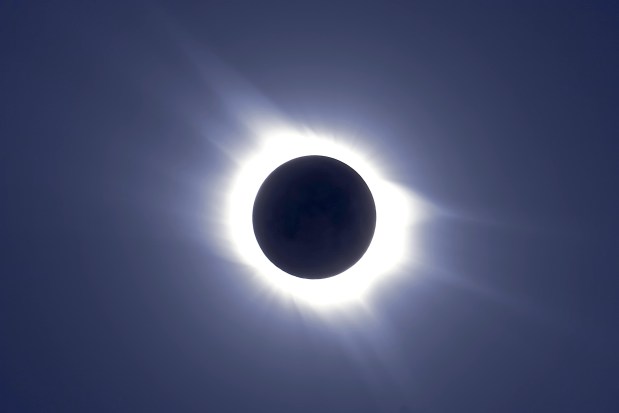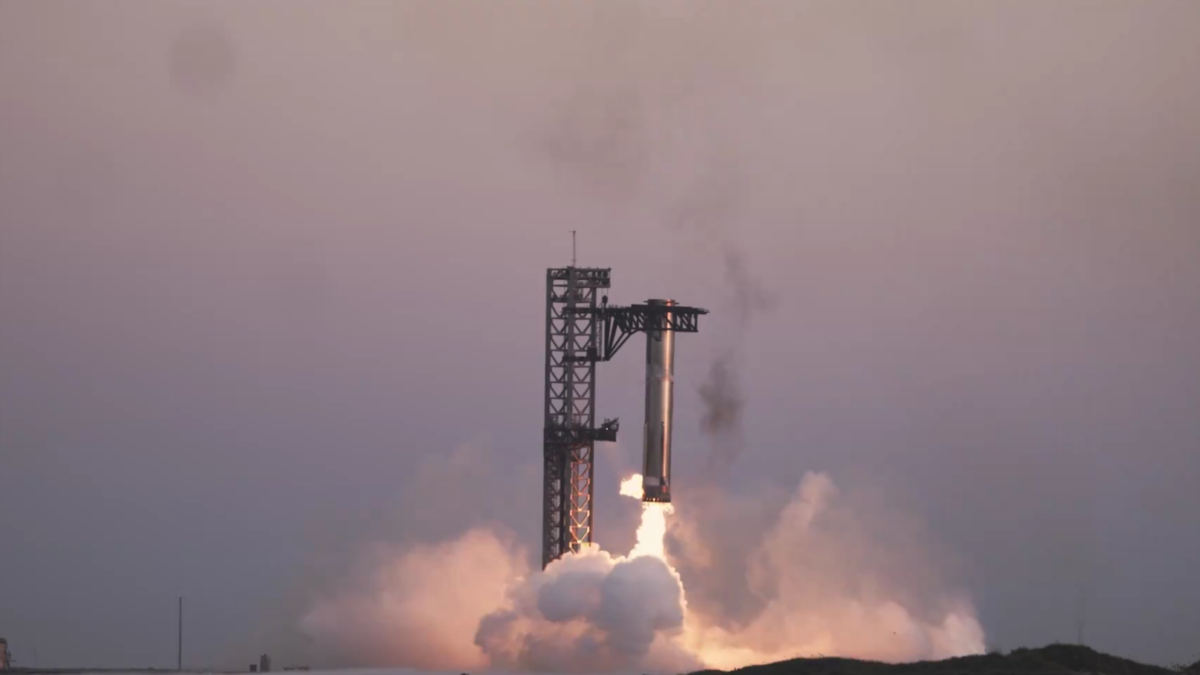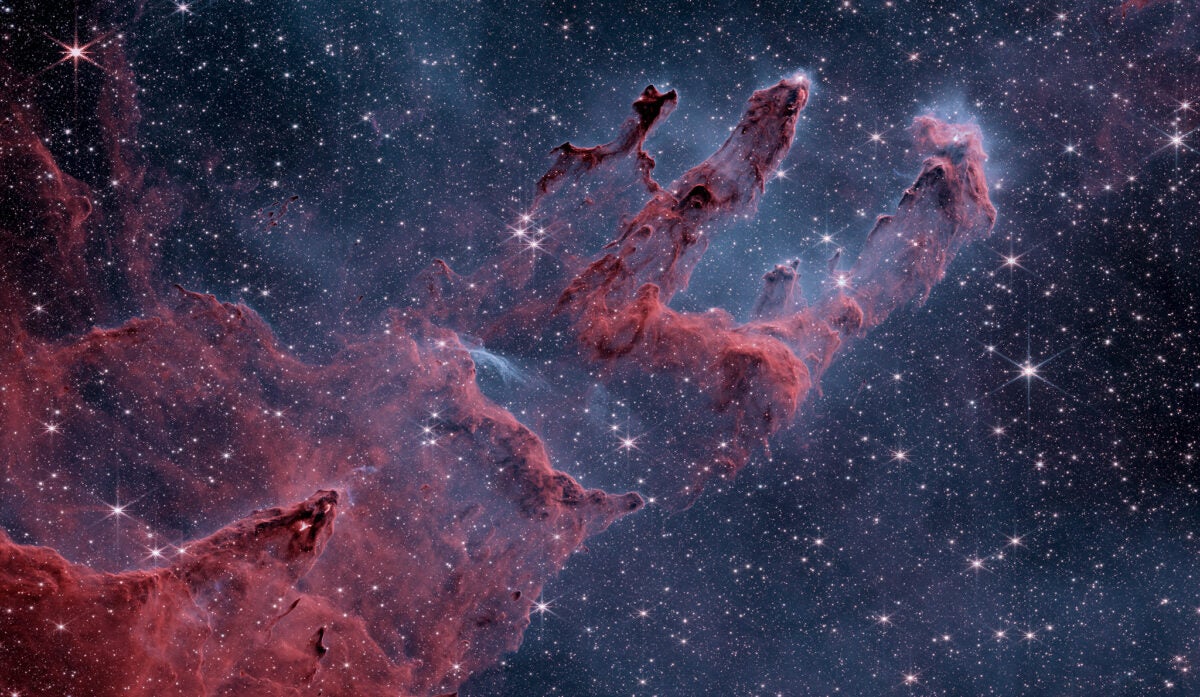
Only during totality is the stunning corona of the Sun visible, such as during the total solar eclipse of March 29, 2006, pictured here. You must be in the path of totality to see this unearthly sight, so plan accordingly.
Credit: Alan Dyer
On April 8, 2024, a total eclipse of the Sun will occur over North America. On this day, the Moon will sail in front of our star and completely cover its luminous face. When it does, the Moon’s shadow will sweep across parts of Mexico, the contiguous U.S., and eastern Canada, plunging untold millions of people into daytime darkness for up to 4 minutes 28 seconds — nearly 70 percent longer than during the Great American Eclipse on Aug. 21, 2017. This lengthier totality will allow viewers ample time to absorb one of the most breathtaking spectacles in the heavens.
If you stood in the path of totality during the 2017 eclipse, you have already been anointed by the Moon’s shadow and probably don’t need convincing to do it all again this April. But you may still benefit from the advice that follows, especially as no two eclipses are ever alike. And for those who haven’t experienced totality, this article will help you plan a memorable first voyage into daytime darkness.
Totality is one of the most magnificent and mystifying phenomena in the heavens. Its ethereal beauty can leave a lasting impression of awe and wonder. Add in some bizarre and unique environmental effects, and you can imagine why totality is an experience like no other. But why imagine it? This April, do your best to see this rare spectacle of the ages.
The most important truth

Credit: Stephen James O’Meara
To see totality and experience the sensual wonders accompanying it, you must be in the path of totality — the path where the Moon’s dark inner shadow (the umbra) will travel across Earth. If you are not in this narrow 124-mile-wide (200 kilometers) path, you will not see the Moon fully cover the face of the Sun, you will not see the Sun’s outer atmosphere, and you will not experience the complete fall of darkness or the full range of other strange atmospheric and environmental effects.
The truth of this fact cannot be stressed enough. Anyone outside the path of totality will be in the Moon’s lighter outer shadow (the penumbra) and see only a partial eclipse. Even if you stand in a 99-percent eclipse zone, you will not see the Sun’s outer corona; this diaphanous breath of atmosphere is 1 million times fainter than the face of the Sun, so even that remaining 1 percent of sunlight can erase it from view. (Don’t be fooled by photographs, which tend to exaggerate the corona’s brilliance).
A total eclipse and a partial eclipse are simply not the same. As Annie Dillard so eloquently explains in her 1982 book Teaching a Stone to Talk: “Seeing a partial eclipse is very interesting. It bears no resemblance to a total eclipse. Seeing a partial eclipse bears the same relation to seeing a total eclipse as … flying in an airplane does to falling out of one. Although one experience precedes the other, it in no way prepares you for it.”
To fully understand these words, you must stand inside the path of totality. Standing on the street outside a concert hall during a live performance will not fill one with the same sense of emotion felt inside the hall by those living that intimate experience. Nor will looking at a static photograph of the eclipse fill you with the same wonder as living it.

Where and weather
The first question most eclipse veterans get asked is, “Where are you going to view the eclipse?” Why? Because they will probably know where totality is most likely to occur under clear skies. When it comes to eclipses, location and weather are inextricably linked. Unfortunately, no one can predict with 100 percent accuracy where to see totality without any hindrance from clouds. When selecting an eclipse-viewing site, keep in mind that, while eclipse-weather predictions are usually on the mark, anything can happen. It’s best to always have a backup plan in place before you depart.
By the time you read this article, the locations within the path of totality predicted to have the clearest weather (at least in the U.S.) will soon be jam-packed with eclipse-goers. Accommodations at these sites are likely to be scarce or unreasonably expensive. If you still want to see the eclipse from these destinations, it may be wise to avoid traveling to them the night before or the day of the eclipse. As many experienced during the August 2017 totality, traffic gridlocks were a nightmare. If you must travel at that time, then be prepared for potentially long delays.
Some eclipse chasers opt to avoid the chaos by taking their chances elsewhere. They consider the weather, yes, but they also follow their hearts. If the path of totality sweeps over or near a region of North America that you would really like to visit — whether it be for the landscape, a special event, or proximity to family or friends — then make that region part of your eclipse adventure. If it’s family or friends you’d like to see, you can double the joy by sharing the experience with them. Besides, if for some unfortunate reason you cannot escape clouds, you’ll still have something exciting to look forward to. Whatever you decide, just make sure you are in the path of totality on eclipse day.
If possible, arrive at your destination a couple of days before eclipse day. Doing so allows you time to monitor satellite data and local weather reports. If the weather prospects at your location look bad, you’ll still have time to activate your backup plan. Just consider the time of totality and the distance you’ll have to travel to your new destination; again, there may be traffic gridlocks. And as for after the eclipse, April 8 falls on a Monday this year, so you may need to plan for travel delays if your schedule might be affected.
Try your best to observe the eclipse from the center line — the line that runs along the path of totality midway between its northern and southern limits (the red line on the map above or, again, see the detailed maps in “Astronomy’s atlas of totality lasts longest at any given point along the path. The length of totality diminishes the closer you are to the northern or southern limits. The detailed maps on Astronomy.com give the times of totality for different locations away from the center line. Don’t discard these locations if that’s where clear weather takes you — just don’t exit the path of totality.

Credit: Stephen James O’Meara
If you have to travel from your selected location to clearer skies before eclipse day, follow the same advice. Remember to fill up on gas prior to eclipse day and have plenty of food and water on hand — enough for a full day’s travel or more. Note that during the 2017 eclipse, some gas stations in prime locations along the path of totality ran out of gas. Many stores in these locations also ran out of bottled water, so be sure to make your water purchases well in advance. Be wise and always use your better judgement along the way. Safety first.
On eclipse day, head to your observing site early — say, at least an hour before the start of the partial phases. In the path of totality, you will experience all the partial phases, with the Moon nibbling away at the Sun until it fully consumes it at the moment of totality. These phases generally last about 90 minutes, which gives you time to monitor the sky for any cloud action before totality arrives. If clouds start to threaten visibility, make your decision to move before the Sun is 50 percent eclipsed. This will give you at least 45 minutes to seek clearer skies. Just make sure the direction you are heading is in the path of totality.
If you are in a situation where you have patchy clouds, it may be necessary to hit the road at a moment’s notice, especially as totality approaches. Don’t devote all your attention to the clouds overhead, but also scan the landscape for patches of sunlight falling on the ground and head for these clear spots. Look especially for a substantial clearing in the distance or a massive break in the clouds. Time is of the essence, so be prepared to act quickly. Under patchy cloud conditions, always have your vehicle packed and ready to move. And don’t worry about setting up and breaking down equipment — you don’t need equipment to see or experience the eclipse. All you need is an approved solar filter for the partial phases, and your unaided eyes and maybe binoculars during totality. (Solar filters are an absolute must for all phases except totality.)
But if you cannot escape clouds, you can still experience the effects of totality. You’ll still see the fall of darkness, the coronal glow lighting up the clouds, and the many visual and physical changes around you.

Credit: Alan Dyer
Ensuring you enjoy totality
Let’s say all is copacetic. It is eclipse day. You are at your final destination under clear skies. You’ve been enjoying the partial phases safely through your solar filter and the moment of totality is approaching. You may find your heart beating faster and your mind reeling with anticipation as the Moon is about to slam the door shut on the last bead of sunlight.
Now is the time to collect yourself and realize the second most important truth about viewing a total eclipse: You must remove your safe solar filter from your eyes to see totality.
You cannot see totality through a safe solar filter. While you definitely need the filter for the partial phases, when you can see the Sun, during totality there is no Sun! The Moon is completely blocking it. All you see is the dark face of the Moon and the innocuous wisps of coronal light.
Once you remove your solar filter and gaze upon totality, try to exercise restraint and don’t interrupt anyone else’s personal moment. Actually, you may find that bit of advice unnecessary, because seeing the black hole of the Moon surrounded by coronal “smoke” has the power to idle the brain and leave us raw with emotion and wonder.
Now for the third and final truth: Above all else, make sure you actually see totality with your eyes. Have you heard of Sperling’s Eight-Second Law? It comes from Astronomy author Norm Sperling, who in the August 1980 issue wrote that no matter how long totality lasts, the universe conspires to make us feel as though it were only eight seconds long. Yet that swift passage of time spent in the Moon’s shadow can fill us with an eternity of otherworldly peace. Don’t spend totality watching the view through your camera — even if you capture a photo, it won’t ever compare to the actual experience. I recommend simply following an old Zen proverb: “Live this moment to the fullest.”
Still on the fence?
If you’re still debating whether to attend totality, consider this: The next total solar eclipse over parts of the contiguous U.S. and Canada will not occur until Aug. 23, 2044. The next total solar eclipse over Mexico will not occur until March 30, 2052. That’s a long time to wait to experience such a life-changing event.
And if you do make a voyage into daytime darkness this April, may the skies rain sunshine on you until totality’s darkness descends.
Eclipse traffic

Research following the August 2017 total eclipse showed marked increases in traffic in states along the path. This occurred both in the week leading up to the event as well as immediately following the end of totality. (Many of us who saw that eclipse likely remember best the nightmare traffic on the way home.)
April’s eclipse boasts longer totality than in 2017. Several million more people live inside this eclipse path and it crosses numerous major cities, making day trips easier for many. (Want more details? Check out “Upcoming eclipses by the numbers” by Michael Zeiler in our April 2023 issue.) All of this means traffic is likely to become even more congested than in 2017, especially in areas where the road system is not designed to handle a significant influx of vehicles.
This is vital to keep in mind, even if your destination is normally only a few hours away. As cities fill up with eclipse-seekers, roads will become generally busier for everyone. Even errands and commutes in the week beforehand may take longer. Travel times will also likely increase in the hours leading up the eclipse. Then, the number of cars on the roads during totality itself will drop — only to surge immediately after fourth contact.
Regardless of how far you are traveling, plan for it to take several more hours than on an average day — particularly following totality. Make sure you have appropriate supplies to accommodate increased travel times, including water, food, and time-sensitive medications. If you can, stay and watch the partial phases following totality. Not only will you get the “full” eclipse experience, but this also may give traffic some time to clear up as well.



